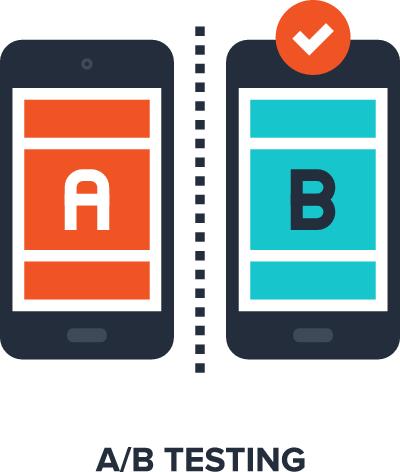Let’s face it: the main aim of ecommerce websites is to encourage visitors to buy products. How can you measure, what will work the best on your customers? What would simplify their path to purchase? A/B testing is the most popular way to find out what changes introduced to your website will bring the highest growth of conversion rate. Let us guide you through the basics on A/B testing.
How A/B testing works in ecommerce optimization?
In short, A/B testing is having two versions of the same website and compare which one performs better. The one that’s better in terms of conversion rate is the winning one.Well, A/B testing is also a wonderful way to evaluate and measure not only the conversion rate, but also marketing campaigns, e-mail marketing campaigns and advertisements.
What can you A/B test on ecommerce websites?
Well, virtually everything: icons, headlines, subheadlines, call-to-action colours, images, product pages, testimonials, contact us information, awards, social proof, security icons. You can test them in terms of place, colours, size and many more.
How long should you carry on A/B testing?
It depends on your conversion rates and the amount of traffic you ecommerce websites generates.The less traffic, the longer you’d have to carry a test. Usually A/B test should be carried on from few days to two weeks. And remember, you can always carry on more than one A/B test at a time.
If you give your test not enough amount of time, the results will be irrelevant. On the other hand, if you will carry it for too long, it will also be irrelevant as there would come other factors (for example Christmas time) that could falsify the result.
How to prepare for A/B testing?
First, you need to study your website data. Google Analytics is the base for good website analysis: find the most problematic areas in your conversion funnel.Second thing in ecommerce optimization is studying user behaviour on your website. You can use tools like CrazyEgg or Hotjar to study heatmaps, scroll maps or visitor recordings to see what problems your customers have on your website and what stops them from buying – is it a problem with finding call-to-action buttons, is it not enough amount of buying incentives or maybe they get lost somewhere and leave the page.
How can you estimate if your test is significant?
Luckily, there are many tools on the market by which you can test it. One that we recommend is A/B significance test available on getdatadriven.com.
What to do when my test got a negative lift in conversion rate?
Losing a test doesn’t mean that you were wrong or that you have failed. You can easily turn it into a winning situation: ask yourself a question “Why?”. This will allow you to create further hypotheses and deepen your knowledge about your customers behaviour on your ecommerce website.
Final thoughts:
What we gathered here was just a quick introduction into A/B testing and ecommerce optimization. To become really expert you need skills, tools and most of all – experience and scientific approach.